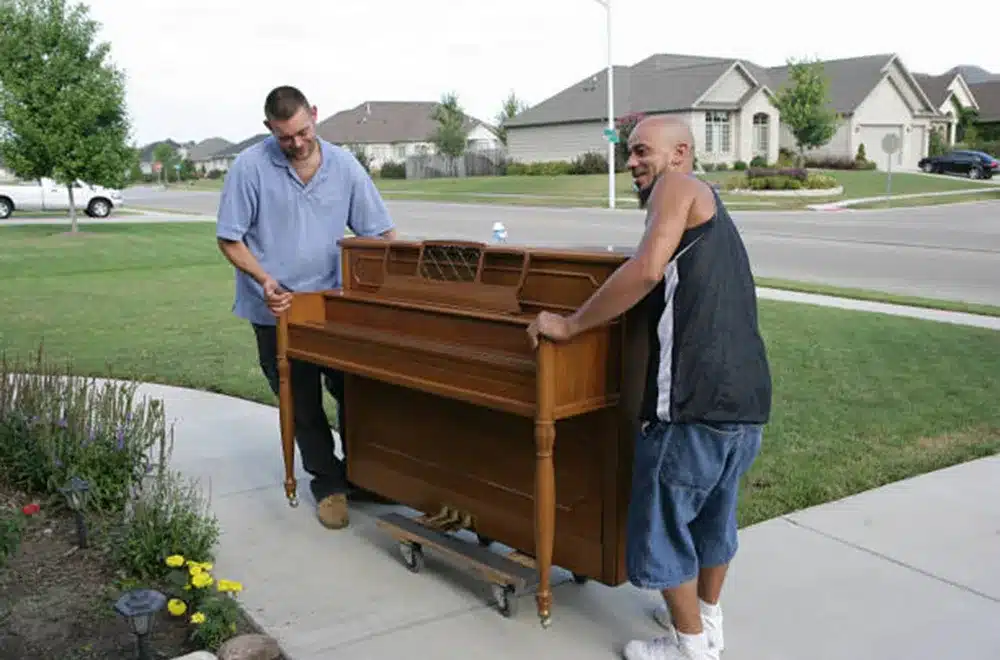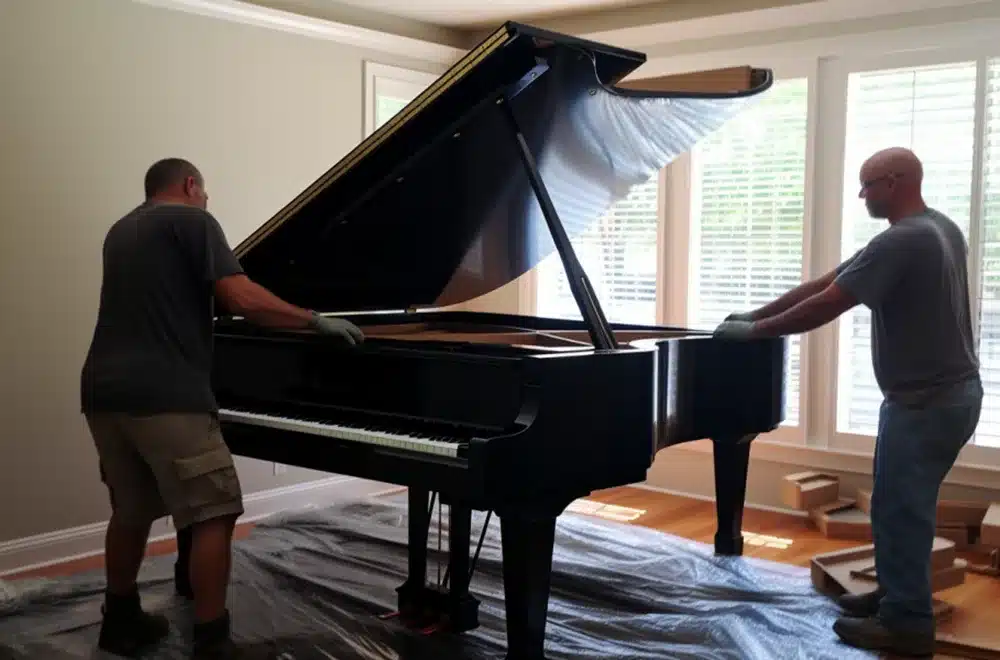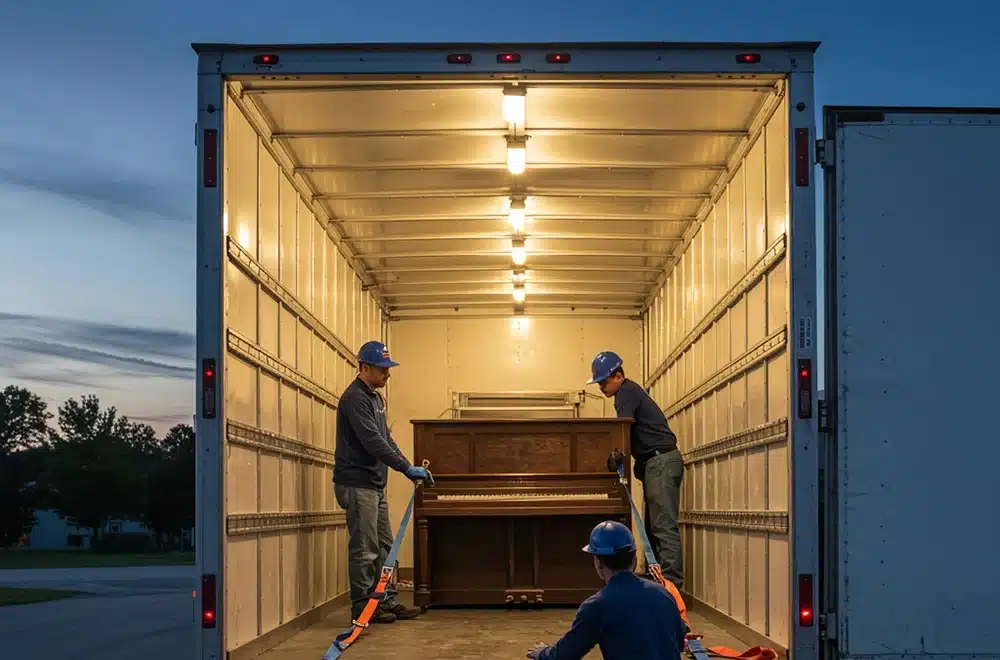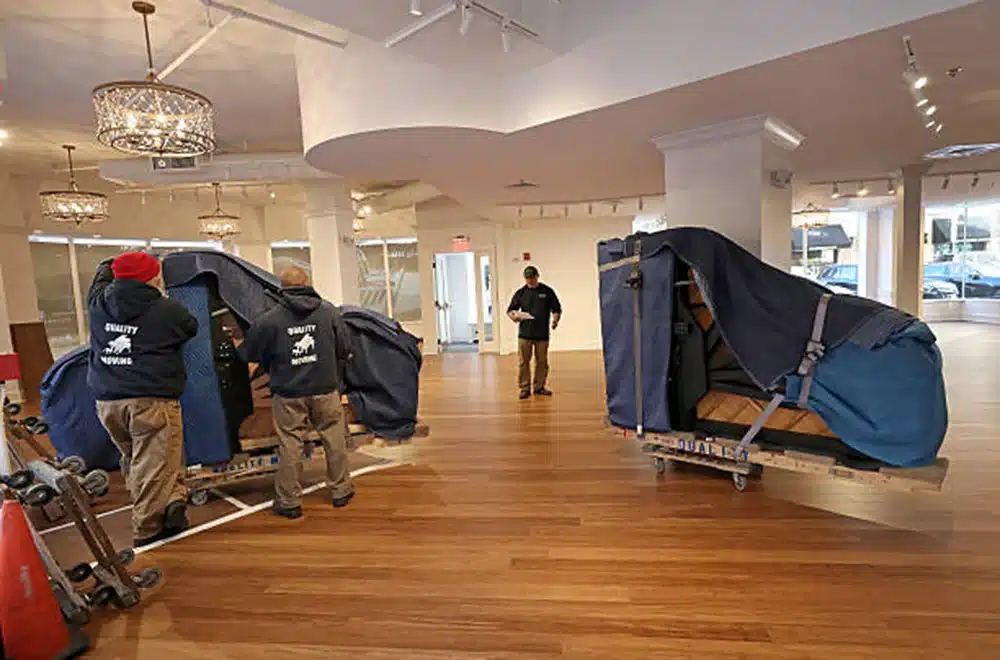“Can you move a piano without taking it apart?” It’s a common question that many piano owners ask when preparing for a move. The answer isn’t always a simple yes or no when deciding how to protect the piano during a move. Whether piano disassembly is required depends on several factors, including the type of piano, the layout of your home, and the complexity of the move. Professional piano movers assess each situation carefully. Their goal is to move your instrument safely and efficiently, which may involve partial or complete disassembly when needed. In this blog, we’ll explain why disassembly may be necessary, how it’s done, and why trusting the pros makes a big difference.
Why Disassembly May Be Required for Piano Moving
Pianos are bulky, heavy, and awkwardly shaped. Despite their solid appearance, they contain hundreds of intricate parts that can be vulnerable during transport. In many cases, narrow doorways, stairwells, or sharp corners in a home or building make it nearly impossible to maneuver a piano in one piece. In such situations, partial disassembly becomes the best solution, making the instrument easier and safer to handle.
More importantly, piano disassembly helps prevent damage to parts like the legs, pedals, or decorative casing. These components can easily be bumped or broken if not properly removed and secured beforehand. Breaking the piano down into manageable parts also ensures balanced lifting and even weight distribution, reducing the risk of injury to movers and strain on the instrument.
Types of Pianos and Their Disassembly Needs
Different types of pianos have different disassembly requirements. Let’s look at how upright and grand-style pianos are typically handled during a move.
Upright Pianos

Upright pianos are often the easiest to move and are commonly transported intact. Their compact design allows for simpler handling, especially when wide doors or elevator access is available. However, professional piano movers may still remove panels, legs, or pedals to protect these parts during the move. Even when not disassembled entirely, upright pianos are very heavy and still require a team of professionals to move them safely.
Baby Grand & Grand Pianos

Grand and baby grand pianos almost always require partial disassembly. These instruments have wide frames and curved bodies, and feature extended legs and pedals that are highly prone to damage. The legs, pedals, and lyre are removed first. Then, movers carefully detach the lid, wrap it in thick padding, and set it aside. In many cases, they’ll also remove the music rack or other delicate components, depending on the design. To move the main body of the piano, professionals use a specialized piano skid board that helps secure and balance the frame. Additionally, because these pianos are sensitive to temperature and humidity, they are transported in a climate-controlled vehicle to avoid warping or damage.
How Professional Movers Disassemble and Reassemble Pianos
Disassembling a piano requires a careful process, specialized tools, and experienced hands to ensure nothing is damaged or misplaced. Professional piano movers begin by labeling each part and wrapping everything in protective padding. This includes delicate components such as the lyre, pedals, and lid, all of which must be handled with care. They also use piano-specific tools, such as key clamps, dolly straps, and torque-limiting wrenches, to safely disassemble and secure parts without over-tightening or stripping hardware.
Once loaded, the piano is placed in a climate-controlled truck to protect it from heat, humidity, or sudden temperature changes. Upon arrival, the movers reassemble everything on-site, ensuring that each piece is reattached correctly and positioned properly in your home.
Explore Our Piano Moving Services in Houston.
Can You Move a Piano Without Disassembly?
Sometimes you can move a piano without disassembly, but it depends heavily on the instrument and the conditions of the move. Upright pianos being moved a short distance, such as across a room or down a wide hallway, often remain intact. If the pathways are wide and there are no stairs or tight turns, professional movers may not need to disassemble anything.
However, skipping disassembly when it’s actually needed is a major mistake. It can lead to damaged walls, broken legs, and irreversible harm to the piano’s frame or finish. While some homeowners may consider DIY piano moves, the cost of one mistake far outweighs the savings. Moving a piano is about strategy, safety, and knowledge. Hiring professionals ensures your instrument stays in excellent condition and arrives safely.
Trust the Experts to Handle It the Right Way
Knowing when and how to disassemble a piano comes down to experience. Professional movers, like Piano Movers of Houston, can assess the size of your piano, measure access points in your home, and make the right call every time. Beyond skill, working with insured movers gives you added liability protection. If anything goes wrong during the move, their coverage ensures you’re not left with costly repair bills. Once the piano is moved and reassembled, professionals can also advise you on when to tune it, helping restore the sound quality after the move. That kind of peace of mind is hard to put a price on.
Need help moving your piano? Get a free quote from Piano Movers of Houston.
FAQs About Piano Disassembly and Moving
Q1: Do all pianos need to be disassembled before moving?
No, not all pianos require disassembly. Upright pianos can often be moved as-is, while baby grand and grand pianos typically need partial disassembly due to their size and design.
Q2: How long does it take to disassemble and reassemble a grand piano?
It typically takes 1 to 2 hours to disassemble a grand piano and another hour to reassemble it, depending on the piano’s model and the complexity of the move.
Q3: Will disassembly affect the tuning or condition of my piano?
The disassembly process itself doesn’t damage tuning, but moving can cause slight shifts. It’s usually recommended to tune your piano a week or two after reassembly.
Q4: Can I disassemble a piano myself?
It’s not recommended. Pianos are heavy, and incorrect disassembly can result in broken parts or injury. Hiring professional piano movers ensures that they have the tools and training needed to do it safely.
Q5: What tools do professional piano movers use for disassembly?
Movers use specialized tools like piano skids, adjustable wrenches, padding blankets, straps, and climate-controlled trucks. These tools help ensure every component is protected during the move.
Related Posts

Preparing Your Piano for a Move: What Professionals Do Before It Leaves

Move Your Piano in a Climate-Controlled Transport: Why It Matters
